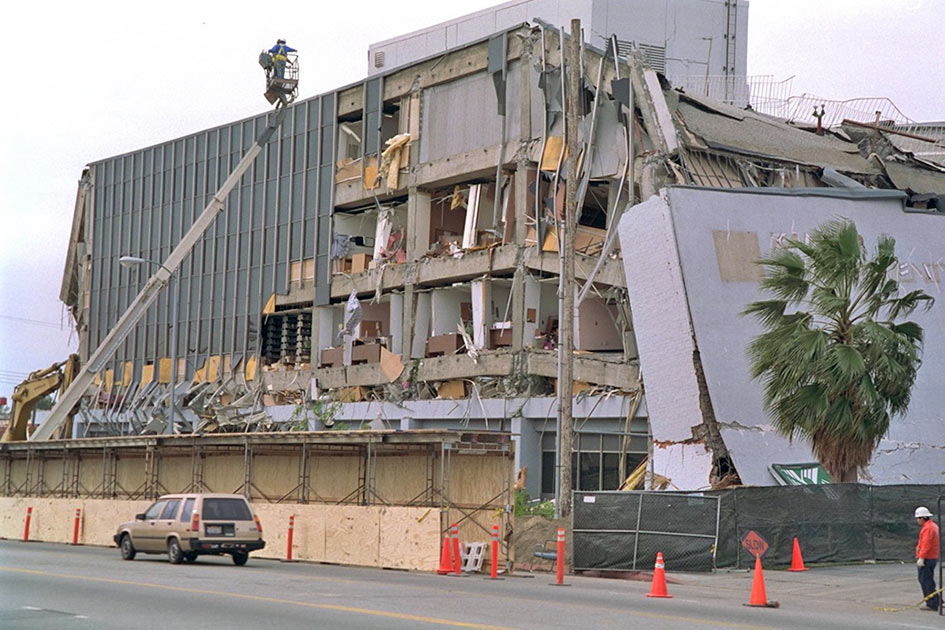At 4:30 a.m. on January 17, 1994, the M6.7 Northridge struck in the San Fernando Valley, roughly 20 miles northwest of downtown Los Angeles. Although the duration was only 10 to 20 seconds, the ground motions included a reading of 1.82g, the highest ever recorded in an urban area in North America, and the MMI was IX (violent). The earthquake resulted in around 60 fatalities, and damage estimates were as high as $50 billion.
One of the critical building code lessons to come out of the earthquake was the unacceptable performance of steel moment resisting frame construction. Up until then, this type of construction was assumed to be one of the best seismic-performing systems. Once the extent of the problem became known, the earthquake engineering community faced a very real crisis. The building code for this type of construction had just been invalidated, and engineers had little idea of how safe existing buildings were or how to repair damaged buildings.
In conferring with several industry experts, FEMA determined that the first need was for guidance on how to repair damaged buildings. This work was completed in less than one year, and its product, the Interim Guidelines for Steel Moment Resisting Frame Construction (FEMA 267), became the de facto standard for repairing this type of construction.
FEMA then contracted the second phase of the project: to research and develop final design criteria documents for new and existing steel moment frame buildings for use by the nation’s model building codes and standards. This initiative was groundbreaking in that it was the first FEMA project to effectively combine academic research and the earthquake engineering design community on a scale never before attempted. The project also required close coordination with the steel and welding manufacturing industries who ultimately provided steel columns and beams for project research and testing purposes.
The final products included technical guidance for new construction (FEMA 350), upgrade guidance for existing buildings (FEMA 351), evaluation and repair guidance for damaged buildings (FEMA 352), a technical specifications/quality control guidance document (FEMA 353), a non-technical guidance document for building owners and local officials (FEMA 354) and a series of background papers (FEMA 355CD).
As a result of this effort, the nation’s model code organizations and industry standards groups used these findings to improve their codes and standards for this type of construction. FEMA has been widely recognized for its role in organizing and leading the solution to what was a serious problem for the nation’s building codes and standards.



